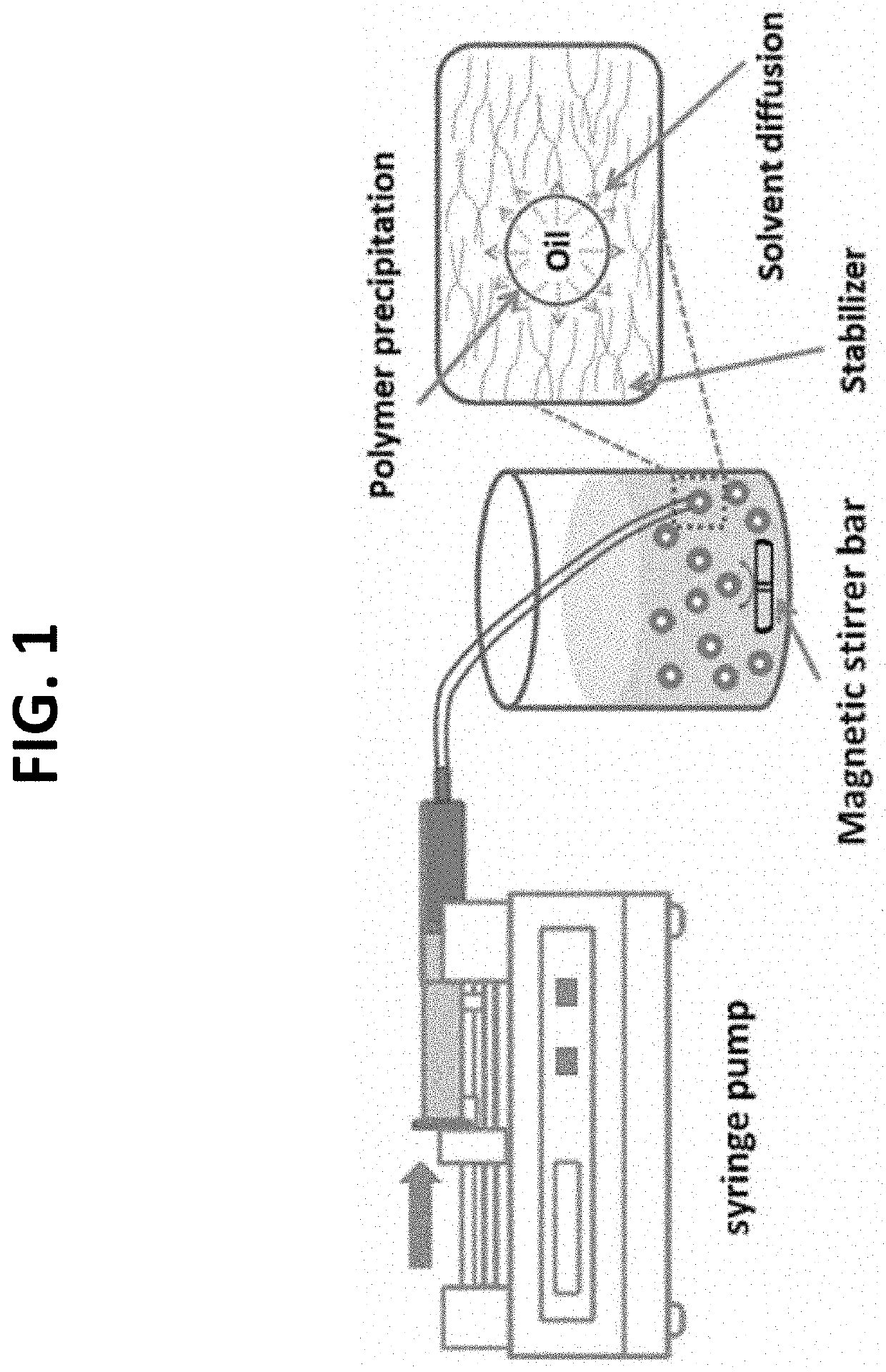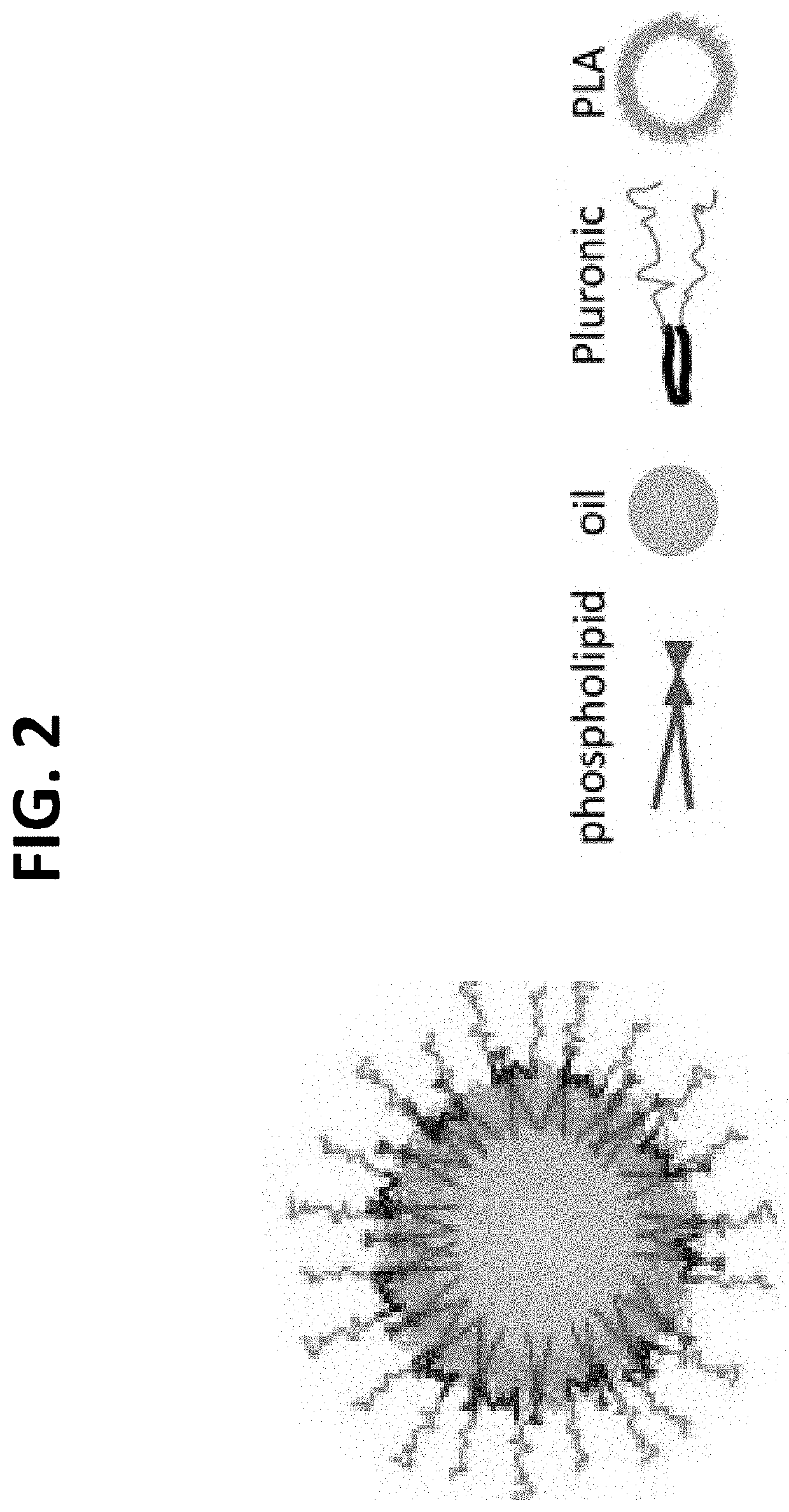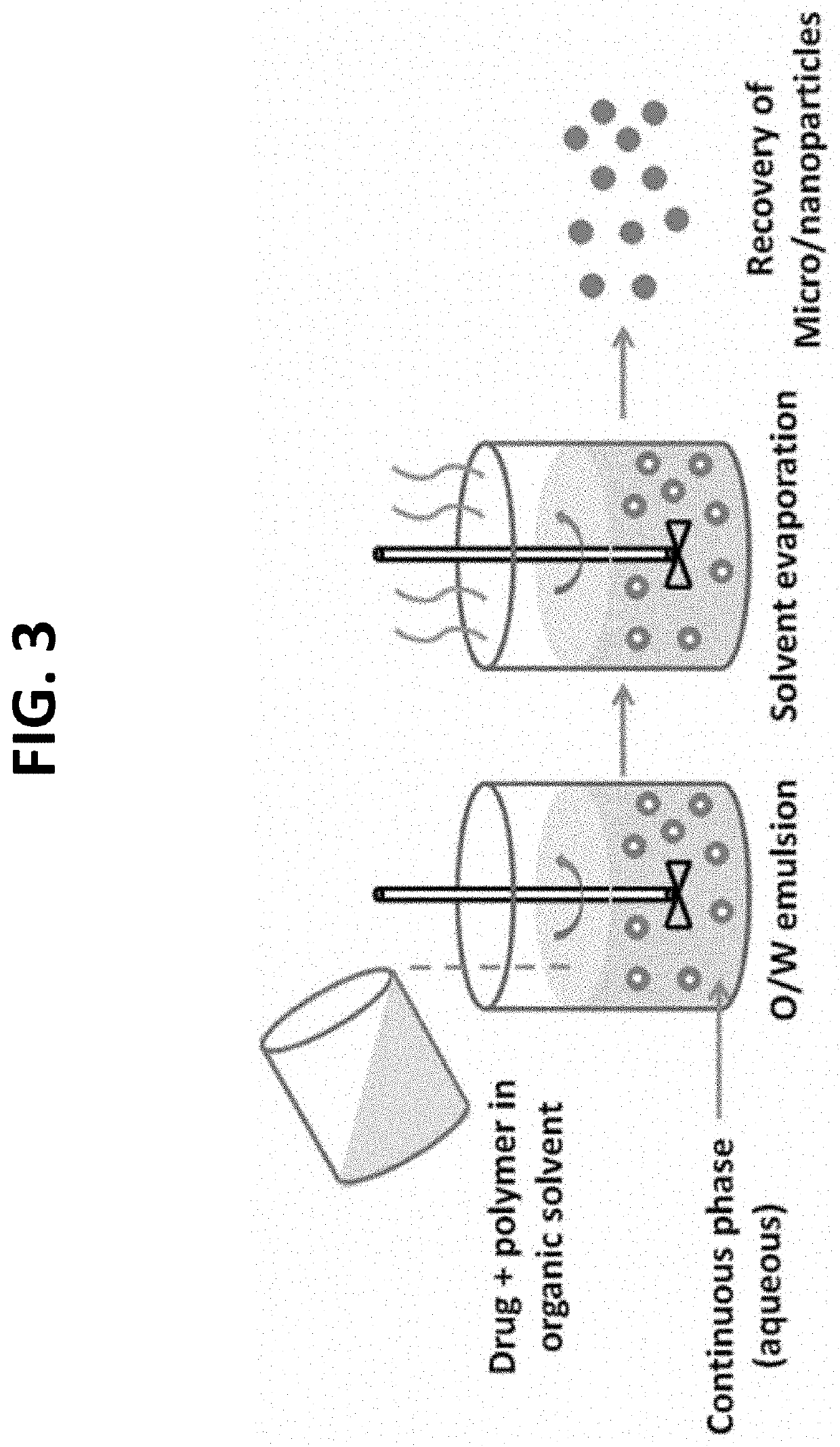Therapeutic nanoparticles encapsulating terpenoids and/or cannabinoids
a technology of nanoparticles and terpenoids, which is applied in the direction of microcapsules, drug compositions, cardiovascular disorders, etc., can solve the problems of limited administration of terpenoids and cannabinoids, and achieve the effect of increasing the efficacy of myrcen
- Summary
- Abstract
- Description
- Claims
- Application Information
AI Technical Summary
Benefits of technology
Problems solved by technology
Method used
Image
Examples
example 1
pitation Method for Producing Myrcene-Encapsulated Nanoparticles
[0256]A nanoprecipitation method based on a solvent displacement (FIG. 1) was tested for generation of myrcene-containing PLGA nanoparticles. The particle formation by the nanoprecipitation method is ruled by the so-called Marangoni effect, which is subjected to interfacial turbulences that occur at the interface of the solvent and the non-solvent and results from complicated and cumulated phenomena like flow, diffusion, and surface tension variations. The presence of a stabilizer is very important to avoid aggregate formation and to impart stability to nanoparticles during the nanoprecipitation technique.
[0257]Formulation
[0258]PLGA based nanoparticles (NPs) were prepared using a nanoprecipitation method according to the formulas (F1-F11) in Table 1. A mixture of hydrophilic and lyophilic surfactants (Pluronic and Span) were used to ensure the system stability. Acetone was evaporated using different experimental conditi...
example 2
sification Method for Producing Myrcene-Encapsulated Nanoparticles
[0276]The formation of microemulsions was also used to obtain PLGA nanoparticles. A microemulsion is a system of water, oil and an amphiphile which is a single optically isotropic and thermodynamically stable liquid solution. Its formation is spontaneous (FIG. 2). Soybean lecithin, which is a natural lipid containing mixture of phospholipids, has been previously used as an amphiphile for the preparation of various delivery nanosystems such nanoemulsions, liposomes, micelles and nanoparticles. This method allows the formation of spherical nanocapsules where the oily core composed of myrcene, is entrapped and retained in a thin dense wall formed by PLGA polymer and phosphatidylcholine.
[0277]Formulation
[0278]PLGA based NPs were prepared using a microemulsification method according to the formulas in Table 3.
TABLE 3Formulas of NPs prepared using the microemulsification method.FormulaF12F13F14F15F16F17F18OrganicMyrcene———2...
example 3
ation (High Speed Homogenizer) Method for Producing Myrcene-Encapsulated Nanoparticles
[0286]A method based on the emulsification of polymer organic solution into a water phase, followed by organic solvent evaporation (FIG. 3) was used for preparation of myrcene-encapsulating nanoparticles. The organic phase is poured into the continuous phase (aqueous phase) in which a surfactant is dissolved to impart stability to the emulsion. Emulsification is carried out under high-shear force to reduce the size of the emulsion droplet. This process will largely determine the final particle size.
[0287]Formulation
[0288]PLGA based NPs were prepared using a single emulsion method according to the formulas in Table 5. The emulsification was performed with a Polytron® homogenizer.
TABLE 5Formulas of NPs prepared using the emulsification method.FormulaF19F20F21F22F23F24OrganicMyrcene*—10%20%40%80%100%phase 4 mg 8 mg16 mg32 mg40 mgPLGA 40 mg40 mg40 mg40 mg40 mg40 mg(Resomer 502)Ethyl acetate1 mL1 mL1 mL...
PUM
| Property | Measurement | Unit |
|---|---|---|
| Fraction | aaaaa | aaaaa |
| Fraction | aaaaa | aaaaa |
| Diameter | aaaaa | aaaaa |
Abstract
Description
Claims
Application Information
 Login to View More
Login to View More - R&D
- Intellectual Property
- Life Sciences
- Materials
- Tech Scout
- Unparalleled Data Quality
- Higher Quality Content
- 60% Fewer Hallucinations
Browse by: Latest US Patents, China's latest patents, Technical Efficacy Thesaurus, Application Domain, Technology Topic, Popular Technical Reports.
© 2025 PatSnap. All rights reserved.Legal|Privacy policy|Modern Slavery Act Transparency Statement|Sitemap|About US| Contact US: help@patsnap.com



